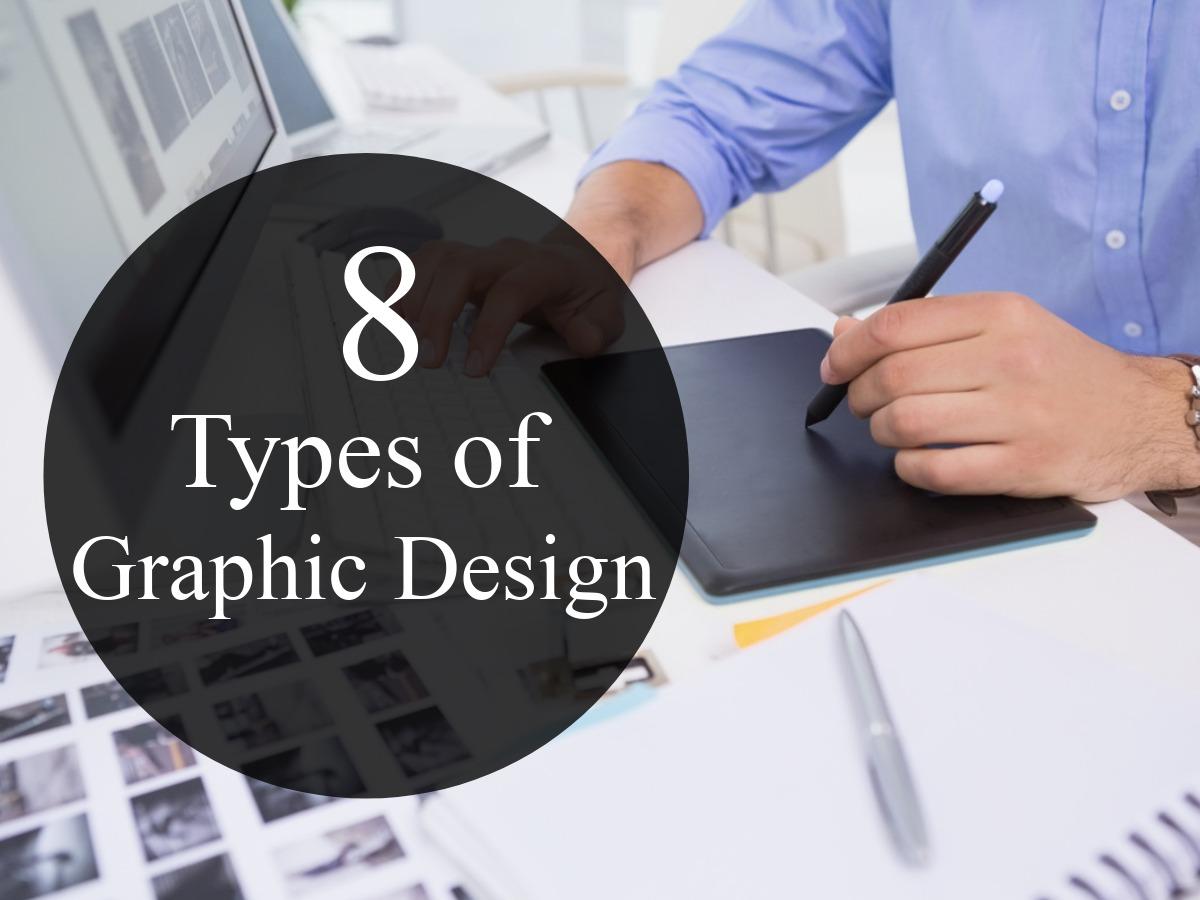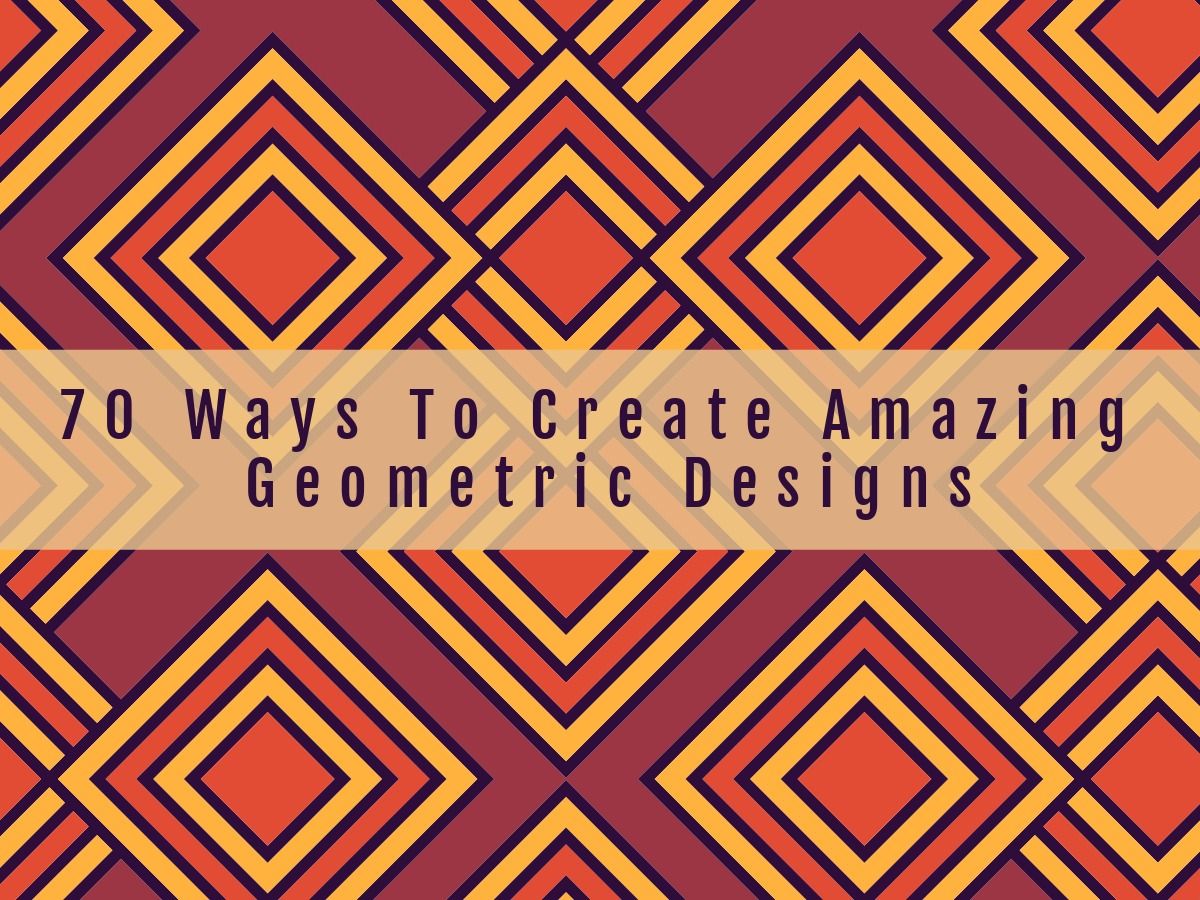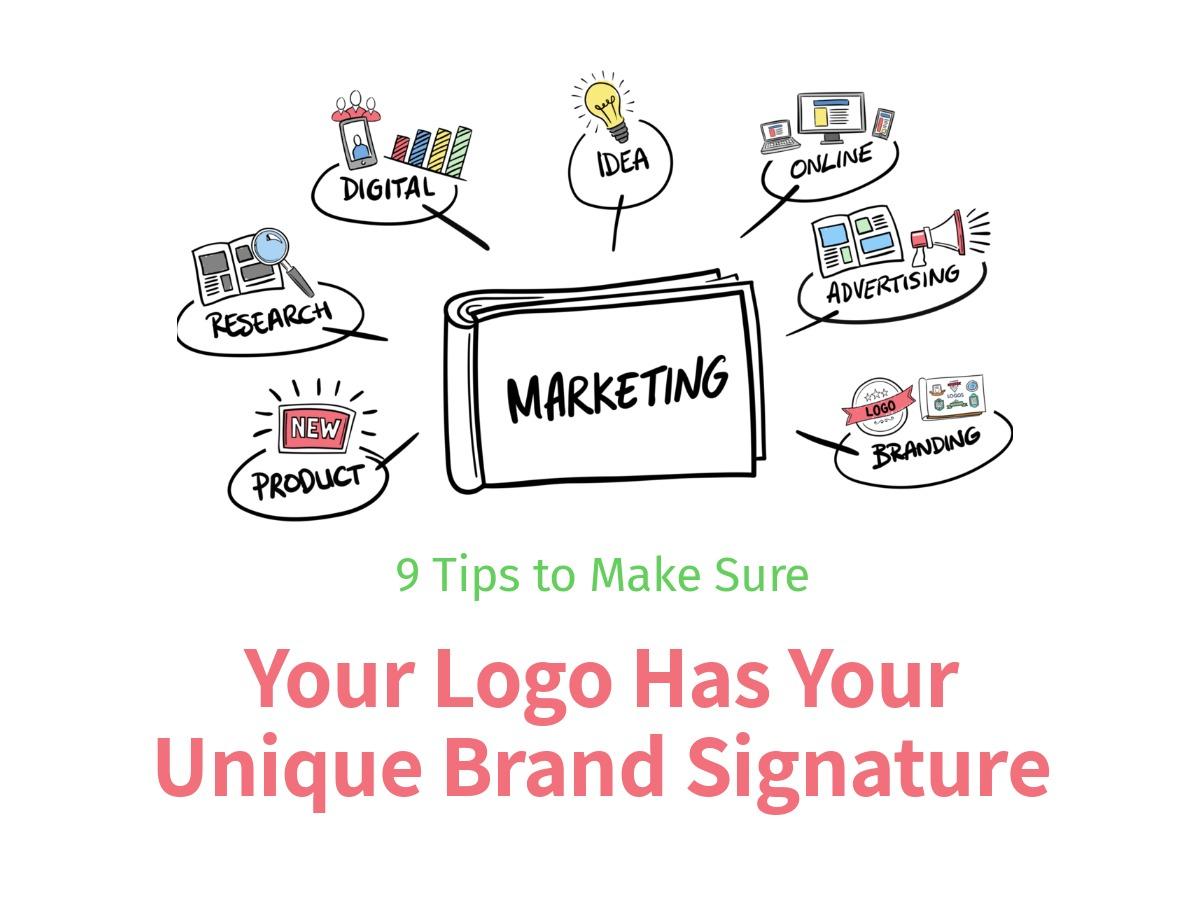There are many different types of graphic design. This post will aim to highlight 8 of the most common types of graphic design and describe them in detail.
We live in a visual culture that is now being combined with the technological advances we are seeing today. While there are a number of different types of graphic design, they all have certain elements and components that the graphic designer will try to adhere to. Utilizing good design elements and practices not only enhance web design, marketing materials, mobile app design, and social media posts, but in some cases, graphic design stands as the central focus of such pieces.
Whether you are doing creative design, corporate design, billboards, digital publishing, or print design, most graphic designers tend to adhere to the 5 key graphic design components. The 8 types of graphic design discussed in this article certainly benefit from the following five elements discussed below.
Five Key Elements of Any Graphic Design

Before we jump into the 8 types of graphic design, knowing what they all have in common first and foremost is important.
The best graphic design is such that draws in the eye. Without integrating the elements listed below, whatever type of graphic design you are in, it may not get the message across. And that is precisely the point: to convey a message and do so convincingly. Ensuring that your design aligns with the following practices will help you to create more compelling projects and presentations. These are tips straight from the design experts and what many art directors would follow.
Balance
Balance primarily refers to the distribution of elements in a design. Whether it’s a web design or printed material, the way that the various pieces layout is critical. And all balance doesn’t necessarily have to be symmetrical. There is also asymmetrical balance. Many do tend to center graphic design elements and then build out from there. But again, you can create some real interest by taking a less symmetrical approach as well.
Hierarchy
Hierarchy means that elements are distributed in such a way as to show their order of importance. There is generally strategy associated with establishing visual hierarchy, as you want the user to be able to clearly follow your idea and message.
Alignment
If we take into consideration the way in which people read and/or scan a page, then we have a better grasp of the concept of alignment. Graphic designers aim to make information as easy as possible to interpret. To this end, they may use a series of grids in order to effectively organize and align a project.
Repetition
The repetition of certain graphic elements can create a sense of unity. Many design projects will in fact utilize repetition in an effort to reinforce a specific message or perhaps solidify brand identity through consistency.
Contrast
As far as contrast is concerned, the juxtaposition of certain elements can make key features pop. So for example, you might include bright colors with faded, thinner lines with thick, and in doing so draw the attention to strategically placed design components.
Ultimately, the way in which you use these five elements is going to determine what type of graphic design you are creating. And of course, within these central 8 types of design, there are a number of subsections. In this article though, we focus on the eight most commonly used types of graphic design.
The 8 Types of Graphic Design
_1650528536598_resize.jpg)
Now that you know the key elements in graphic design, we will delve a little deeper into the 8 types of graphic design.
While there a many varients of graphic design, and new types of graphic design appearing often, we have decided to stick with 8 of the most common types of graphic design for this article.
These are:
- User interface design
- visual identity design
- Marketing and advertising design
- Environmental graphic design
- Publication design
- Motion graphic design
- Packaging design
- Art and illustration design
1. User Interface Graphic Design

First off, what exactly is user interface graphic design? Essentially, this is the type of design that is required when creating software-based or digital interfaces. The key is to ensure that the overall experience is easy and pleasing for users. Keep in mind, the keyword here is “easy” more so than pleasing. Yes, the user needs to like the overall feel and look of the design, but their main concern is getting the task at hand done. A few of the crucial components of effective user interface design:
A personalized design experience.
Authenticity counts. And what could be more authentic then graphic design that does offer a more personal and unique experience.
Emotional experience
Hand in hand with a personal design, users associate emotion with graphic design. The color palette, the fonts, the objects and shapes, the images, these all inspire emotion, and emotional connection enhances any interface.
Make it clear
In other words, label everything clearly and carefully. Your design elements should convey the central message right off the bat. Simple is almost always better than overly complex in this type of graphic design.
Respect alignment
This goes back of course to one of the five key elements of good design. The way in which people read or naturally scan a page absolutely needs to come into play in any user interface design scheme.
2. Visual Identity Graphic Design

Your company is going to be tied to your brand. When you are doing web design for a website or design for a brochure, for instance, you need to use elements that therefore tie into that brand identity. The branding process involves a brand identity designer, branding team, graphic designers or whatever your creative department consists of, to develop a plan and brand identity around your company logo design, to the color scheme used, and the style of font. You will need someone with strong conceptual and creative skills who is able to do a visual representation of your company.
An excellent logo design, for example, has the objective of creating immediate recognition with your design. That is to say, a person looking at a business card or advertisement should think of your business because of how you visually identified with the brand. Brand consistency is key here.
Here are some key elements when it comes to visual identity graphic design:
Express personality
Every brand has a certain personality attached to it. Be it playful, luxurious, or quirky for example, you do have one. Any graphic design to this end should be reflective of that particular brand personality type.
Understand your competitors
As a brand, you are going to have direct competition. That said, you want to know where your competition stands with their design strategy. This can also help you keep an eye on trends and potentially get a better feel for what’s effective.
Ensure you communicate something
Who said graphic design is simply about creating pleasant-looking projects. There’s a message associated with every brand; your design in turn should speak to this core message.
3. Marketing and Advertising Design

Your marketing and advertising design efforts in many ways determine the success or lack thereof of your company. The designs that you create in order to market your brand are what get people’s attention and ultimately get them to take a second look at you. Some examples of key marketing tools created: flyers, postcards, vehicle wraps, social media images, essentially anything meant to get your firm out in front of people. Some businesses opt to hire out this particular kind of graphic design. Depending on budget, this could be a cost-effective way to handle it. Key ingredients of good marketing graphic design:
Understanding people’s needs
When creating marketing materials, you want to be sure to address your audience’s pain points. What value does your product/offering bring to them? Identify their needs and design accordingly. Make sure your visual elements emphasize how you can help them.
Make it immersive
Good graphic design engages people. Certainly, they can look at something and understand how it relates to them. But is it truly engaging that user? With visual elements, you have an opportunity to create a more immersive (and depending on the medium) even interactive experience for people.
Ensure it is timely
And by this, we mean as far as both getting a graphic project out on time and in alignment with your brand’s immediate messaging. And also, ensuring that it is timely in relation to current trends, news, and other such resources. You definitely do not want to develop outdated or stale marketing designs.
4. Environmental Graphic Design

This one is a bit more complex than some of the other types of graphic design on this list. Basically, it is a way to more effectively connect people to spaces and places. This could combine visual cues, architectural components, signage, and even landscaping among other elements and practices. The key here is really to make the space more navigable as well as more relatable. This is especially important in a post COVID world where employees may be returning to work.
Retail design is another example, as are office branding and event staging. When it comes to environmental graphic design, keep the following in mind:
It needs to be strategic
Again, a huge part of this style of design is about helping people find their way around. And in doing so, making the environment more comfortable for them. Plan ahead and strategize accordingly.
Make it interactive when possible
As we live in a highly digital era, playing around with more interactive design ideas can be a great way to plan out environmental design. And this certainly helps as far as being able to engage people more powerfully.
5. Publication Design
Typically associated with print medium by way of books, magazines, and other such publications, this kind of design is a very classic one. The saying you can’t judge a book by its cover…doesn’t apply here. In fact, publication graphic designers want you to judge that book by its cover. After all, they put their time and talent into creating it! Some key features of good publication design include:
Paying attention to the details
Especially with print, it all has to flow together seamlessly. Think of a book cover…One element ties to another. Typography and photos, color palette and layout, all have to gel.
Layout skills are a must
It really is all about layout, all about creating that perfect visual hierarchy. In terms of the five principal elements of design—they all come into play when talking about publication graphic design.
6. Motion Graphic Design

As far as this particular type of graphic design, what we mean is basically anything that is animated or has moved to it. It can be one of the most interesting and engaging types of graphic design if done well.
It could be anything from explainer videos, animated films, video games, tutorials, again, anything with a motion component to it. This is a hugely growing field as video is coming to dominate in some contexts. The need for motion graphic designers seems to be at an all-time high. And with technology ever-evolving, the tools used for this form of design are increasingly cutting edge. A few important aspects of motion graphic design:
Be flexible
Because tools are so pervasive and technology readily available, motion designers need to be able to adapt. Companies that hire on such graphic designers are looking for affordability and flexibility.
Understand trends
As this is such a popular and relatively new (with respect to the other forms of graphic design) field, trends definitely play a role here. A motion graphic designer perhaps more so than other designers, needs to stay up to date on what’s hot and what’s not.
7. Packaging Design

When thinking about the different types of graphic design, packaging design isn’t usually one that would spring to mind. However, packaging can be more than just practical. That is to say, it is about so much more than merely housing a product. Package design is about emphasizing a product’s value to the customer and thereby getting that customer to purchase. As with many other kinds of design, package design entails a variety of design skills and techniques. It is a highly comprehensive approach to graphic design and includes everything from photos and images, to typography, to original artwork. For those on the more creative side, this is definitely the design field to be in. Some crucial features of good packaging design.
Problem-solving is involved
Time to dust off those problem-solving skills. More often a one size fits all approach just isn’t going to work. It goes beyond just how a package looks, but functionality is key.
Brand identity comes into play
As with all other facets of a business, the packaging of a product should without question reflect the ideals of the brand. A package designer thus has to be able to come up with a dynamic packaging solution while tying everything back to the brand.
It should tell a story
Most products really do have a story behind them. Whether it involves how it relates to the customer’s life or the life of the company in question, the package is invaluable space on which to convey a story.
8. Art and illustration for Graphic Design

Graphic design and graphic art design aren’t necessarily the same thing, though many confuse the two. With graphic design, there is a problem being solved and accordingly, the design does this in some way. Graphic art design and illustration however involve the artist’s original pieces. Often, graphic art design and illustration will become integrated into a graphic design, but the two are separate ideas. Some key components of art and illustration for design:
Combining elements and media
Commercial art is not strictly painting and/or photos. Many graphic artists used mixed media to convey their idea. This can definitely make for a rich and dynamic experience.
It can be used in a variety of ways
From original t-shirt designs, to album covers, to video game trailers, graphic artists’ work appears pretty much everywhere you look in the world of design.
As we said, many of the graphic design types overlap and many can be broken down even further into subgenres. It’s all about what design style is right for which project. Used as they should be, while paying attention to the five core ideas of good design, the results can often be stunning!

anne carson
Anne is a former English professor turned content writer. Holding a PhD in Literature, she spent almost a decade in academia putting that degree to use, until finally realizing it wasn't exactly the best fit. A full-time writer, she's learned a great deal about the numerous subjects. She knows a lot about design trends and design templates. A mom of five (two teenagers and three dogs).


